Name Alexey Titarenko | Role Photographer Known for Photography | |
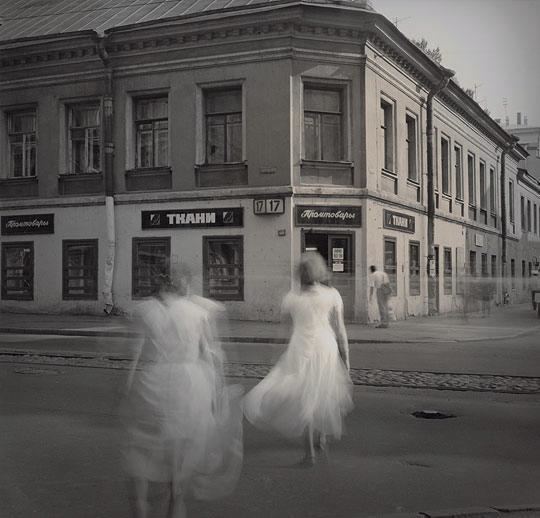 | ||
Full Name Alexey Viktorovich Titarenko Books City of shadows, Alexey Titarenko, Photographs | ||
Nationality Russia, United States | ||
Alexey titarenko magic of st petersburg 1991 2009 photography
Alexey Viktorovich Titarenko (Russian: Алексей Викторович Титаренко; born 1962 in Leningrad, USSR, now Saint Petersburg, Russia) is a Russian (and later, a naturalized American) photographer and artist.
Contents
- Alexey titarenko magic of st petersburg 1991 2009 photography
- Alexey titarenko city of shadows series st petersburg photography
- Biography
- Publications by Titarenko
- Publications with contributions by Titarenko
- Exhibitions
- Collections
- Documentary TV and film about Titarenko
- References
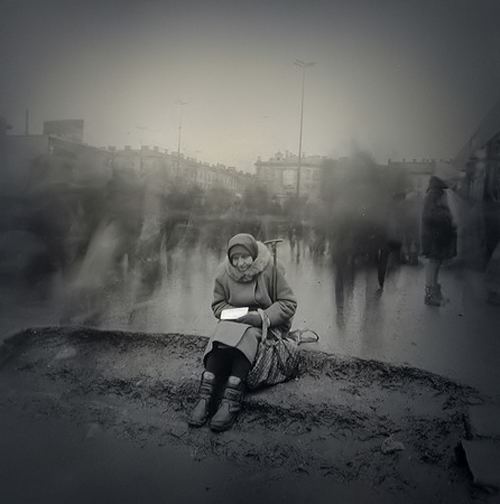
Alexey titarenko city of shadows series st petersburg photography
Biography
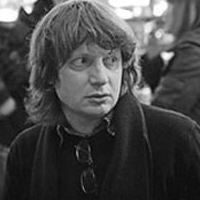
At age 15, Titarenko became the youngest member of the independent photo club Zerkalo (Mirror). He went on to graduate with honors from the Department of Cinematic and Photographic Art at Leningrad's Institute of Culture.
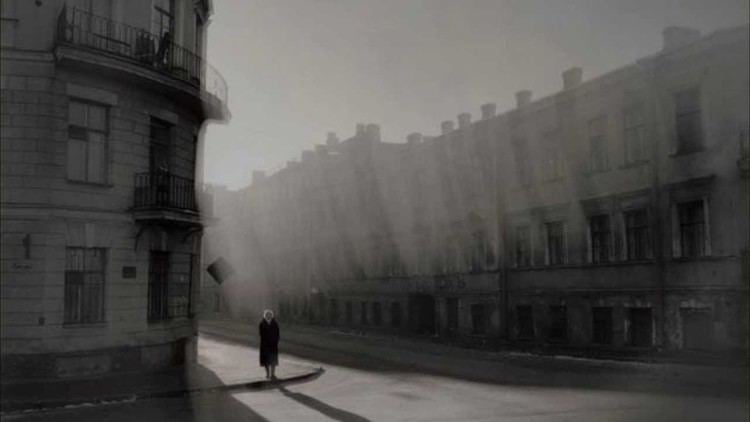
Influenced by the Russian avant-garde works of Kazimir Malevich, Alexander Rodchenko and the Dada art movement (from the early 20th century), his series of collages, photomontages and images created by superposing several negatives, Nomenklatura of Signs (first exhibited only in 1988, in Leningrad) is a commentary on the Communist regime as an oppressive system that converts citizens into mere signs. In 1989, Nomenklatura of Signs was included in Photostroika, a major show of new Soviet photography that toured the US.
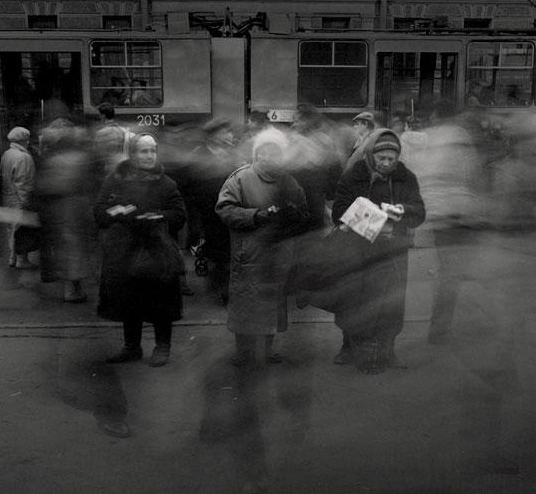
During and after the collapse of the Soviet Union in 1991–1992, he produced several series of photographs about the human condition of ordinary people living on its territory and the suffering they endured then and throughout the twentieth century. To illustrate links between the present and the past, he created metaphors by introducing long exposure and intentional camera movement into street photography. Sources have noted that his most important innovation is the way he uses long exposure. John Bailey, in his essay about Garry Winogrand and Titarenko, mentioned that "One of the obstacles was having an exposure of himself and people's reaction to him included in the image."
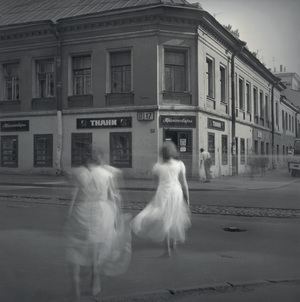
Titarenko's best-known series from this period is City of Shadows (which is also a title of his autobiographical novel), whose urban landscapes reiterate the Odessa Steps (also known as the Primorsky or Potemkin Stairs) scene from Sergei Eisenstein's film The Battleship Potemkin. Inspired by the music of Dmitri Shostakovich and the novels of Fyodor Dostoevsky, Titarenko also translated Dostoevsky's vision of the Russian soul into sometimes poetic, sometimes dramatic pictures of his native city, Saint Petersburg.
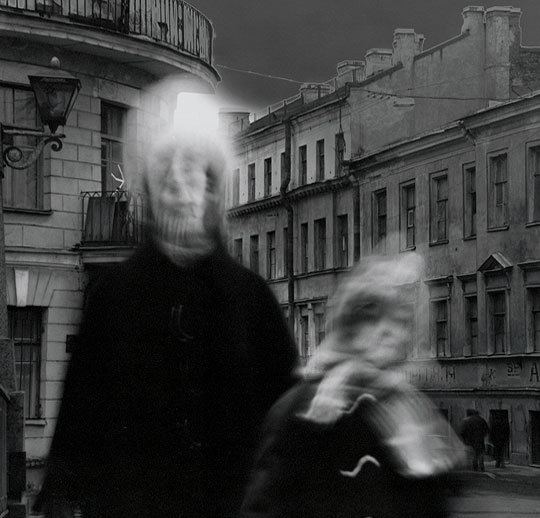
Along with Alexander Sokurov's 2002 film Russian Ark, the City of Shadows exhibition (which now included photographs from the mid and late 1990s inspired by Dostoevsky's novels) was a part of the program celebrating the 300th anniversary of St. Petersburg at the 2003 Clifford Symposium, in Middlebury, VT: What Became of Peter's Dream? Petersburg in History and Arts The Russian Ark and the City of Shadows have one similarity: both are based on the experimental innovation: Alexander Sokurov using a single, very long – 96 minutes sequence shot and Titarenko's several minutes long exposure for some of his photographs.
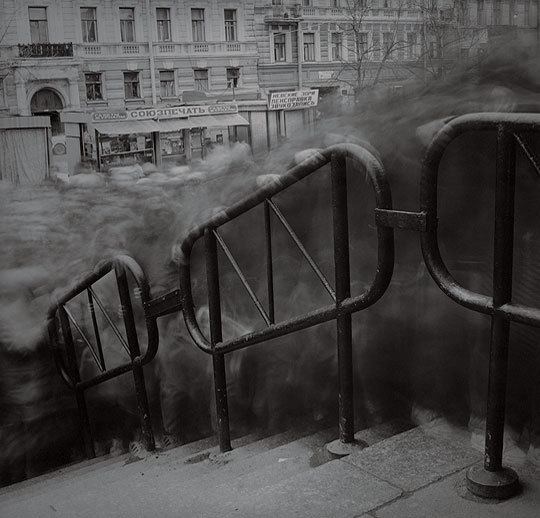
Titarenko's prints are created in the darkroom by photographer himself, sources called him a master of the darkroom technic. Selective bleaching and toning (often done by brush) add depth to his palette of grays. Like Man Ray and Maurice Tabard, Titarenko uses solarisation, but unlike his predecessors, he exposes the print to light during the developing process mostly at the edges and in such a subtle way that it only lowers the contrast and creates a very particular kind of gray silver 'veil'. Nonetheless, in order to emphasize the dramatic aspects of the City of Shadows series, he sometimes uses the Sabattier effect called the Mackie line.
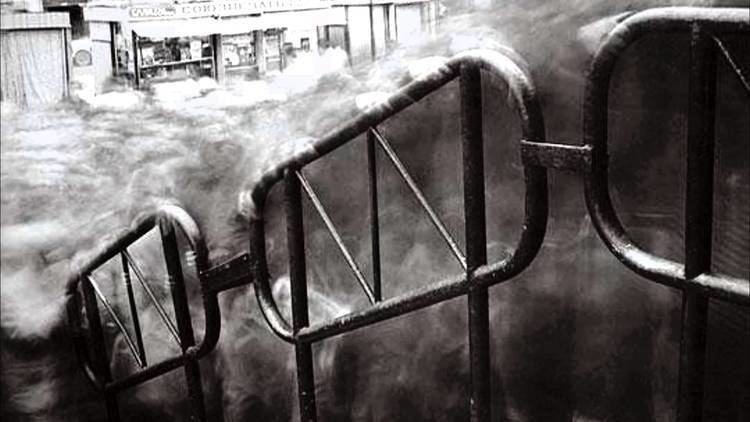
Through interviews, lectures, books, curated exhibitions and two documentaries by French-German TV channel Arte (2004, 2005), Titarenko describes a particular vision of an artist and of art, close to that of Marcel Proust, linked to literature, poetry and classical music (especially that of Dmitri Shostakovich), placing himself very far apart from contemporary tendencies developing particularly in Moscow.
A 2011 exhibition of his photographs from Cuba in the Getty Museum among few other shows, as a part of the Museum's project dedicated to the island: A Revolutionary Project: Cuba from Walker Evans to Now, linked Titarenko's approach to the street photography in contemporary Havana to the Walker Evans one in 1933, by the subjects he photographed and aspects of his black and white printing.
Titarenko became a naturalized United States citizen in 2011; and, as of 2014, lives and works in New York City as an artist, photographer, and printer.
Publications by Titarenko
Publications with contributions by Titarenko
Exhibitions
Collections
Titarenko's work is held in the following permanent collections:
